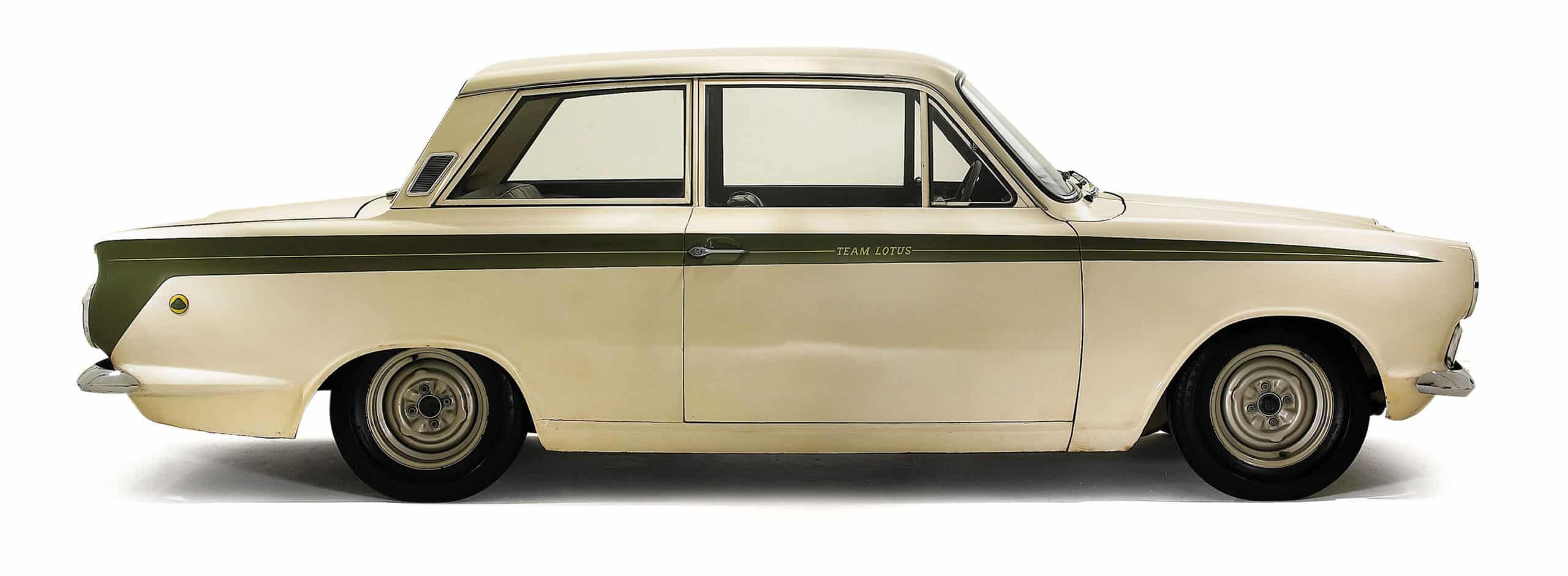The mighty Lotus Cortina at 60
Twist and shout: Lotus Cortinas are still twirling with gusto in historic circles six decades on from Jim Clark’s wheel-waving antics. Paul Lawrence cues the music
Motoring picture library
September marked 60 years since the Ford Lotus Cortina made its competition debut. To celebrate that milestone, the world’s first all-Lotus Cortina race was a key element of April’s Members’ Meeting at Goodwood.
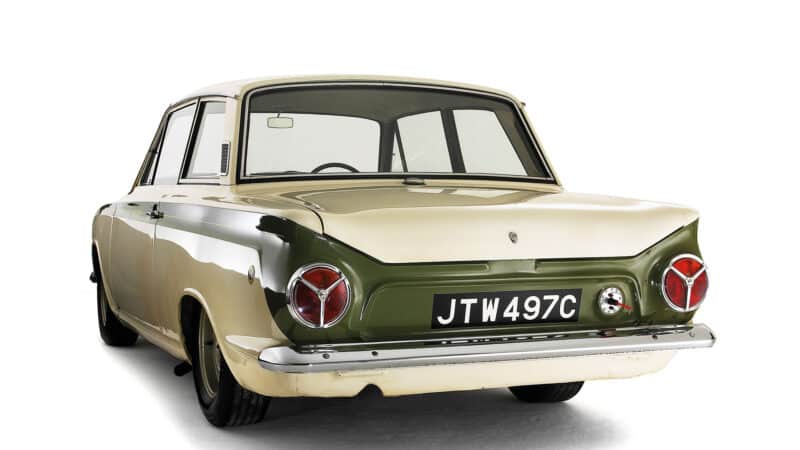
Cortina JTW 497C was allocated to Jim Clark by Team Lotus in ’65
Getty Images
One of the memorable sports images from the 1960s is Jim Clark three-wheeling a Lotus Cortina through Bottom Bend at Brands Hatch, from a period when he added the British Saloon Car Championship to his roster of accolades. Fittingly, the Goodwood race was run for the Jim Clark Trophy.
“It remains one of the most popular cars in historic racing”
Though the model is 60 years old, the Lotus Cortina remains one of the most popular cars in historic racing. In the UK alone there are half a dozen championships where they proliferate.
The Cortina story started as the austere 1950s gave way to the flower-power 1960s. The Mini was in its pomp and Ford management felt that it could not compete due to cost of production. Instead, Ford set its aim at the family car market where the remarkably dull Morris Oxfords and Vauxhall Victors were the cars of choice. That all changed when the Cortina was launched in September 1962; in five years almost one million units were built.
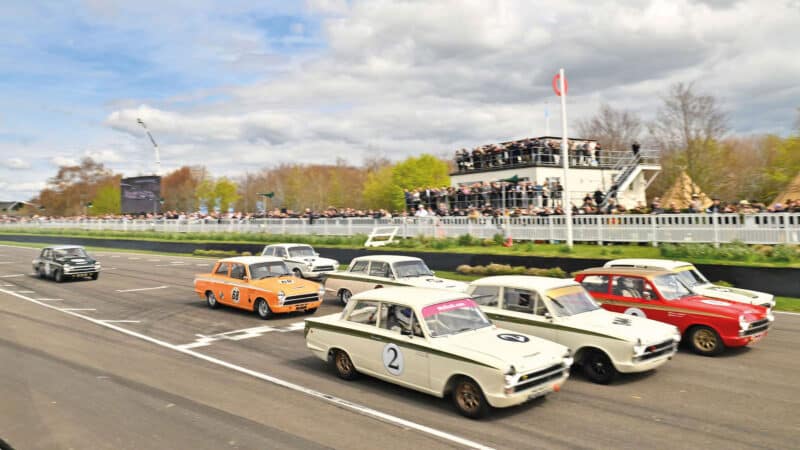
In April, Goodwood hosted an all-Lotus Cortina grid at the 2023 Members’ Meeting.
Jochen van Cawenberge
To give the Cortina a sporty image, Ford decided to homologate it for Group 2 saloon car racing, where 1000 units were needed to meet the rules. This prompted a marriage of convenience between Ford and Colin Chapman’s fledgling Lotus. Chapman had already commissioned a twin-cam version of the Ford Kent engine for his race and road cars as he considered the cost of the Coventry Climax alternative prohibitive.
The Lotus engine, designed by Harry Mundy and developed by Keith Duckworth, first appeared in racing in a Lotus 23 sports racer in 1962, with Jim Clark at the wheel. Initially a 1498cc engine, branded the 116E, it was soon replaced by a bigger 1557cc engine to suit the 1600cc class capacity.
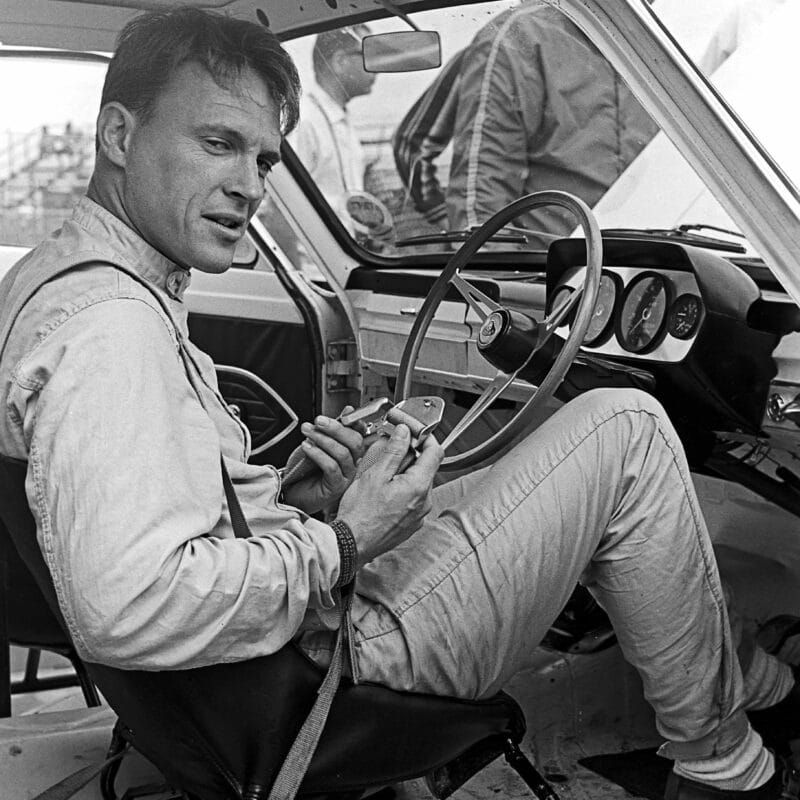
Dan Gurney raced a Cortina at the 1964 Sebring 12 Hours
Getty Images
Ford boss Walter Hayes asked Chapman if he would fit the engine into 1000 Cortinas to satisfy Group 2 homologation rules and by September 1963 the Ford Lotus Cortina was ready to race.
The Lotus Cortina differed from the Consul-badged road car, boasting the 1557cc engine, a close-ratio gearbox from the Lotus Elan and major changes to the rear suspension as well as lightweight panels for doors, bonnet and boot. The customary green Lotus stripe was added to white body shells and a revised interior gave it a sporty feel.
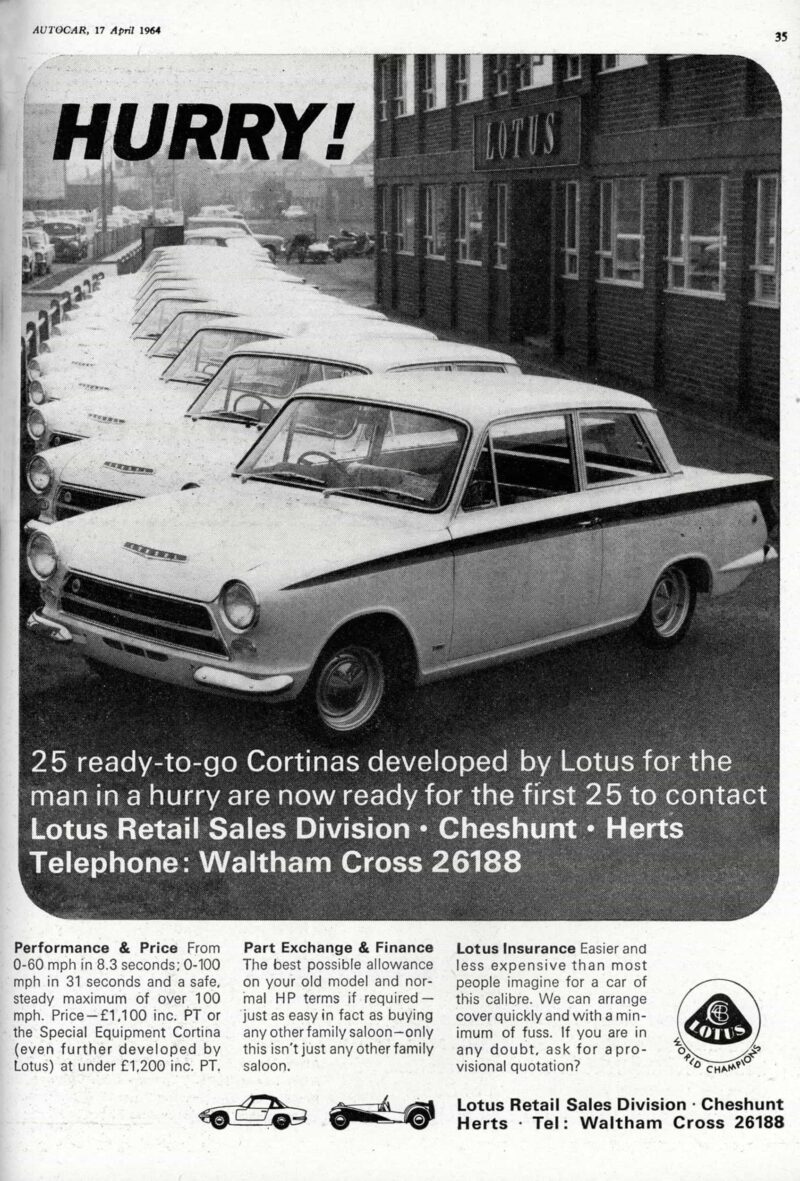
“Developed for the man in a hurry”
Shutterstock
Considerable work was done on rear axle location with bracing and an A-bracket to get the handling right and the early road cars were well received by the automotive press. Initially, the engines were built by outside contractors before Lotus moved to its new base at Hethel where the company had its own engine building facilities.
In September 1963, the Lotus Cortina made its race debut at the Oulton Park Gold Cup, finishing third and fourth behind two mighty Ford Galaxies but, importantly, outpacing the 3.8 Jaguars that had dominated British saloon car racing for some time. The Cortina was instantly a match for anything except the quickest V8 Galaxies and later Mustangs.
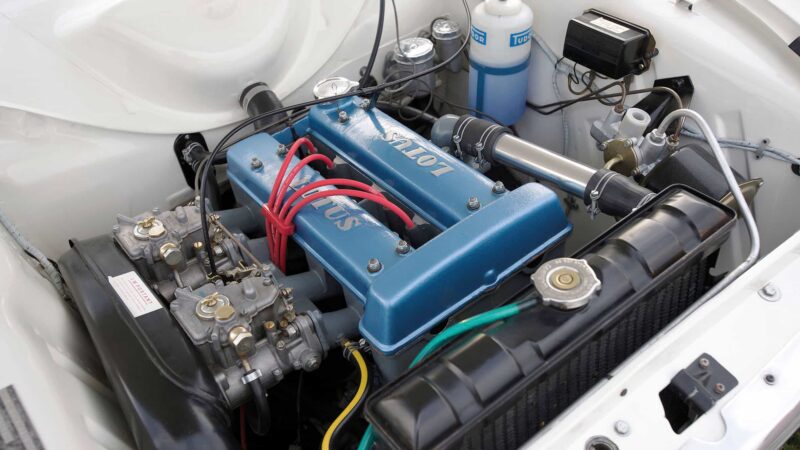
Harry Mundy’s Twin Cam
Alamy
For 1964, works cars were run in Britain, Europe, and America with Team Lotus fielding the British team and Alan Mann Racing looking after the European project. The Team Lotus cars ran a soft rear suspension set-up and a stiffer front end and that led to the stunning images of Clark with a front inside wheel waving in fresh air as he oversteered it to BSCC victory.
The Alan Mann cars, in customary red and gold livery, enjoyed success in Europe and Cortinas and were victorious in Austria, South Africa, Sweden and New Zealand.
By 1965 a new leaf spring based rear end had been developed and Sir John Whitmore dominated the European Touring Car Championship in an Alan Mann car. Though Roy Pierpoint’s Mustang won the British Saloon Car Championship outright, Jack Sears won his class while Jacky Ickx was Belgian champion in Cortinas.
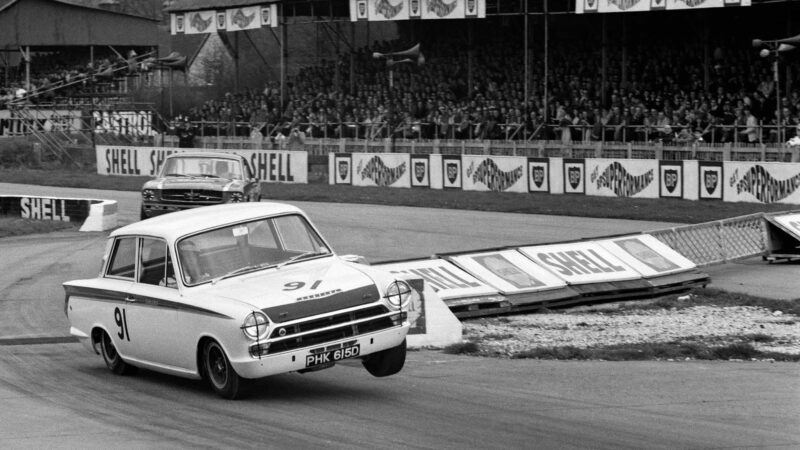
Clark, Goodwood, 1966
Getty Images
In 1966 the BSCC moved to the new Group 5 regulations which allowed more development, and the Cortina gained fuel injection and further tuning by BRM. The engines were now up to 180bhp which gave them a better chance of matching the 4.7-litre Mustangs. Clark in the UK and Whitmore in Europe continued to win regularly though the rise of the Alfa Romeo GTA gave Whitmore a challenge.
After four seasons at the top the Mark 1’s reign started to come to an end as Ford introduced the Mark 2 Cortina. It was a bigger and heavier car which was never at the sporting level of the Mark 1. The arrival of the Ford Escort Mark 1 in 1968 then became Ford’s sporting focus.
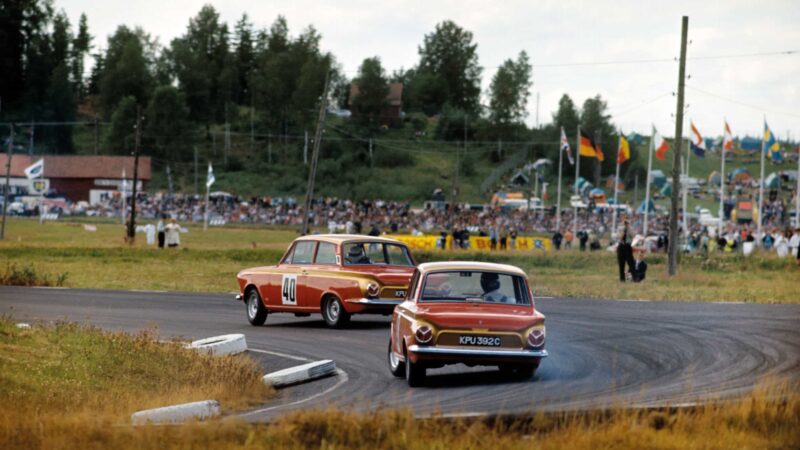
Jackie Stewart (No40) in an Alan Mann Cortina, 1965
mcklein
However, the Mark 1 Lotus Cortina was a fairly successful rally car. It’s rally debut was on the 1963 RAC Rally driven to sixth place by Ford works racer Henry Taylor, despite the A-bracket rear suspension being a weak link once the cars took to the gravel forest tracks.
“Bengt Söderström took the 1966 RAC Rally by 13 minutes”
That A-bracket weakness dogged the car through 1965 and in the snow-hit RAC Rally all four works cars failed to finish. Roger Clark finally gave the works team its first major rally win on the 1965 Welsh Rally and a year later Swede Bengt Söderström scored the Lotus Cortina’s most important rally win when he took the RAC Rally by 13 minutes. Jim Clark starred on the event, despite very limited rally experience, but crashed twice as he pushed his Cortina to its limit.
Through the 1970s and 1980s Lotus Cortinas lay largely dormant in sporting terms, but the subsequent growth of historic racing has given the car a completely new lease of life.
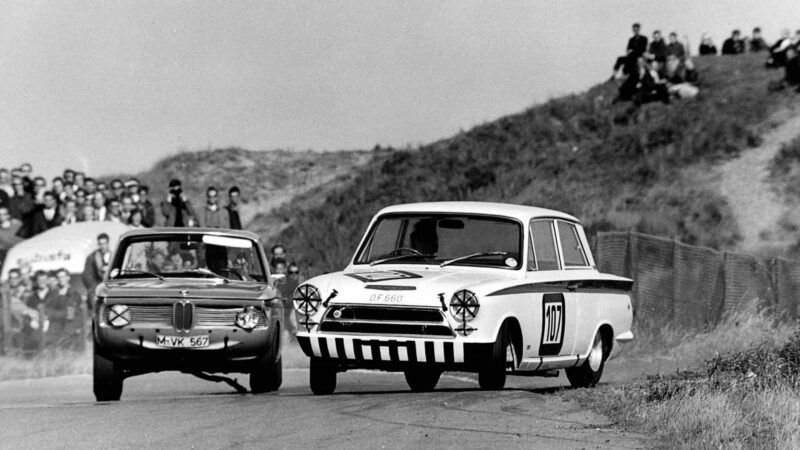
Jacky Ickx powers his Ford Belgium Cortina at Zandvoort in ’65 – the season finale of the ETCC
Getty Images
Originally, a little over 3000 Mark 1s were built in Lotus configuration, and now there are more than 100 racing regularly across Europe. Just as in period they are only bettered by the best of the V8 Falcons and Mustangs, and the battling among the fastest Cortinas in the pack can be ferocious.
Some of the best touring car racers of the modern era have enjoyed success in them including Steve Soper, Matt Neal, Andrew and Mike Jordan, and Gordon Shedden. All of them have discovered the driving pleasure of drifting a Lotus Cortina on the limit.
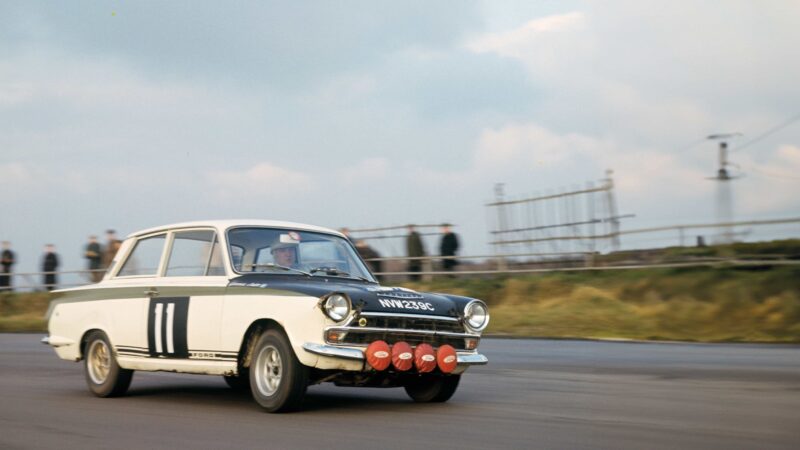
In the 1966 RAC Rally, the Cortina was unstoppable in the capable hands of Swedish driver Bengt Söderström
mcklein
Sixty years on from the car’s sporting debut, a full grid of them met at Goodwood for the Jim Clark Trophy. With car owners paired with professional or semi-pro drivers, it was an incredible experience in what may be the only race solely for the enduring Ford Lotus Cortina Mark 1.
